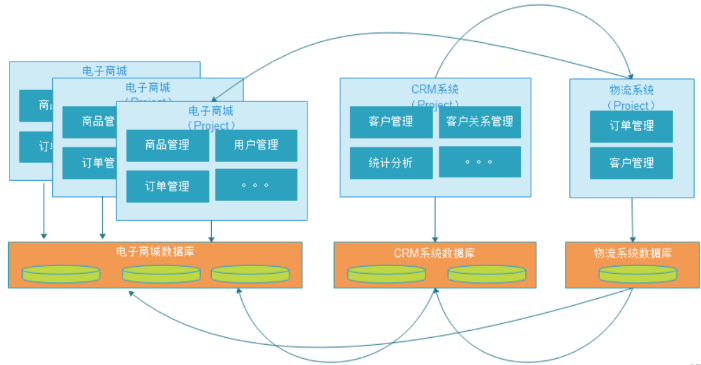c++中的匿名对象
A a;//a的生命周期在整个main函数中
a.Sum(1);
//匿名对象生命周期只有一行,只有这一行会创建对象,出了这一行就会调析构
A().Sum(1);//只有这一行需要这个对象,其他地方不需要。
return 0;日期到天数的转换
计算日期到天数转换_牛客题霸_牛客网根据输入的日期,计算是这一年的第几天。 保证年份为4位数且日期合法。 进阶:时。题目来自【牛客题霸】![]() https://www.nowcoder.com/practice/769d45d455fe40b385ba32f97e7bcded?tpId=37&&tqId=21296&rp=1&ru=/activity/oj&qru=/ta/huawei/question-ranking
https://www.nowcoder.com/practice/769d45d455fe40b385ba32f97e7bcded?tpId=37&&tqId=21296&rp=1&ru=/activity/oj&qru=/ta/huawei/question-ranking
深入理解析构
#include <iostream>
#include <vector>
using namespace std;
int main() {
//vector<int> getMouthDays{0,31,28,31,30,31,30,31,31,30,31,30,31};
static int getMouthDays[13] = { 0,31,28,31,30,31,30,31,31,30,31,30,31 };
int year,mouth,day;
while(cin>>year>>mouth>>day)
{
int n=0;
for(int i=1;i<mouth;++i)
{
n+=getMouthDays[i];
}
n+=day;
if(mouth>2&&((year%4==0&&year%100!=0)||(year%400==0)))
n++;
cout<<n<<endl;;
}
return 0;
}
// 64 位输出请用 printf("%lld")C c;
int main()
{
A a;
B b;
static D d;
return 0;
}构造顺序:C A B D
析构顺序:B A D C
static 修饰后(局部静态对象)第一次执行时才会调用构造 (初始化)。
全局的在main函数之前构造。
局部对象先析构,全局对象和静态对象在析构。
static D d;程序结束时才会销毁。
深入理解拷贝构造

拷贝构造也是构造,写了拷贝构造编译器就不会生成构造了。
Widget v(u);
Widget w=v;Widget w=v;
w存在:调operator赋值
w不存在:调拷贝构造
编译器不优化一个f(x) 调四次拷贝构造。最后共9次。

内存管理

int globalVar = 1;
static int staticGlobalVar = 1;
void Test()
{
static int staticVar = 1;
int localVar = 1;
int num1[10] = {1, 2, 3, 4};
char char2[] = "abcd";
char* pChar3 = "abcd";
int* ptr1 = (int*)malloc(sizeof (int)*4);
int* ptr2 = (int*)calloc(4, sizeof(int));
int* ptr3 = (int*)realloc(ptr2, sizeof(int)*4);
free (ptr1);
free (ptr3);
}


char2是一个5个字节的数组整个数组都存在栈上。
全局变量和static变量的区别;
链接属性不同
int globalVar = 1;
static int staticGlobalVar = 1;执行main函数前就完成初始化。
static int staticVar = 1;当前文件可见
int globalVar = 1;所有文件可见
运行到这个位置就初始化。
int globalVar = 1;malloc/calloc/realloc的区别
malloc:申请空间
calloc:申请空间+初始化为0
realloc:对以有的空间进行扩容
int* p1=new int(10);
int* p2=new int[10];
delete p1;
delete[] p2;new和delete的意义?
对于内置类型申请的效果是一样的
对于自定义类型来说有区别
A* a = new A;//申请空间+调构造函数初始化
A* a2 = (A*)malloc(sizeof(A));
cout << a->_a << endl;
cout << a2->_a << endl;
delete a;//释放空间+调析构函数operator new与operator delete函数
new和delete是用户进行动态内存申请和释放的操作符,operator new 和operator delete是系统提供的 全局函数,new在底层调用operator new全局函数来申请空间,delete在底层通过operator delete全局 函数来释放空间。
/*
operator new:该函数实际通过malloc来申请空间,当malloc申请空间成功时直接返回;申请空间失败,
尝试执行空 间不足应对措施,如果改应对措施用户设置了,则继续申请,否则抛异常。
*/
void *__CRTDECL operator new(size_t size) _THROW1(_STD bad_alloc)
{
// try to allocate size bytes
void *p;
while ((p = malloc(size)) == 0)
if (_callnewh(size) == 0)
{
// report no memory
// 如果申请内存失败了,这里会抛出bad_alloc 类型异常
static const std::bad_alloc nomem;
_RAISE(nomem);
}
return (p);
}
/*
operator delete: 该函数最终是通过free来释放空间的
*/
void operator delete(void *pUserData)
{
_CrtMemBlockHeader * pHead;
RTCCALLBACK(_RTC_Free_hook, (pUserData, 0));
if (pUserData == NULL)
return;
_mlock(_HEAP_LOCK); /* block other threads */
__TRY
/* get a pointer to memory block header */
pHead = pHdr(pUserData);
/* verify block type */
_ASSERTE(_BLOCK_TYPE_IS_VALID(pHead->nBlockUse));
_free_dbg( pUserData, pHead->nBlockUse );
__FINALLY
_munlock(_HEAP_LOCK); /* release other threads */
__END_TRY_FINALLY
return;
}
/*
free的实现
*/
#define free(p) _free_dbg(p, _NORMAL_BLOCK)对比malloc和new operator
size_t size=2;
void* p4=malloc(size*1024*1024*1024);
cout<<p4<<endl;malloc申请失败返回0

try
{
void* p5=operator new(2*1024*1024*1024);
cout<<p5<<endl;
}
catch(exception& e)
{
cout<<e.what()<<endl;
}使用方式一样处理错误方式不一样。
new operator更符合面向对象的方式。

定制operator new 和 operator delete
void* operator new(size_t n)
{
void* p = nullptr;
p = allocator<ListNode>().allocate(1);
cout << "memory pool allocate" << endl;
return p;
}
void operator delete(void* p)
{
allocator<ListNode>().deallocate((ListNode*)p, 1);
cout << "memory pool deallocate" << endl;
}
};定位new/replacement new
对已经存在的一块空间调用构造函数初始化
A* p2=(A*)operator new(sizeof(A));
new(p2)A(10);
p2->~A();
operator delete(p2);格式:new(空间指针)类型参数
int的范围 -2^31-2^32-1
申请4G空间
x64:
size_t size=2;
// void* p4=malloc(size*1024*1024*1024);
// cout<<p4<<endl;
//
try
{
char* p5= new char[2*1024*1024*1024];
cout<<p5<<endl;
}
catch(exception& e)
{
cout<<e.what()<<endl;
}模版初阶

函数模版
目录
c++中的匿名对象
日期到天数的转换
深入理解析构
深入理解拷贝构造
内存管理
全局变量和static变量的区别;
malloc/calloc/realloc的区别
new和delete的意义?
operator new与operator delete函数
对比malloc和new operator
定制operator new 和 operator delete
定位new/replacement new
模版初阶
函数模版
template<class T>
void Swap(T& x1,T&x2)
{
T x=x1;
x1=x2;
x2=T;
}我们不能调用函数模版,调用的是函数模版实例化生成的对应类型的函数

预处理时生成。




















